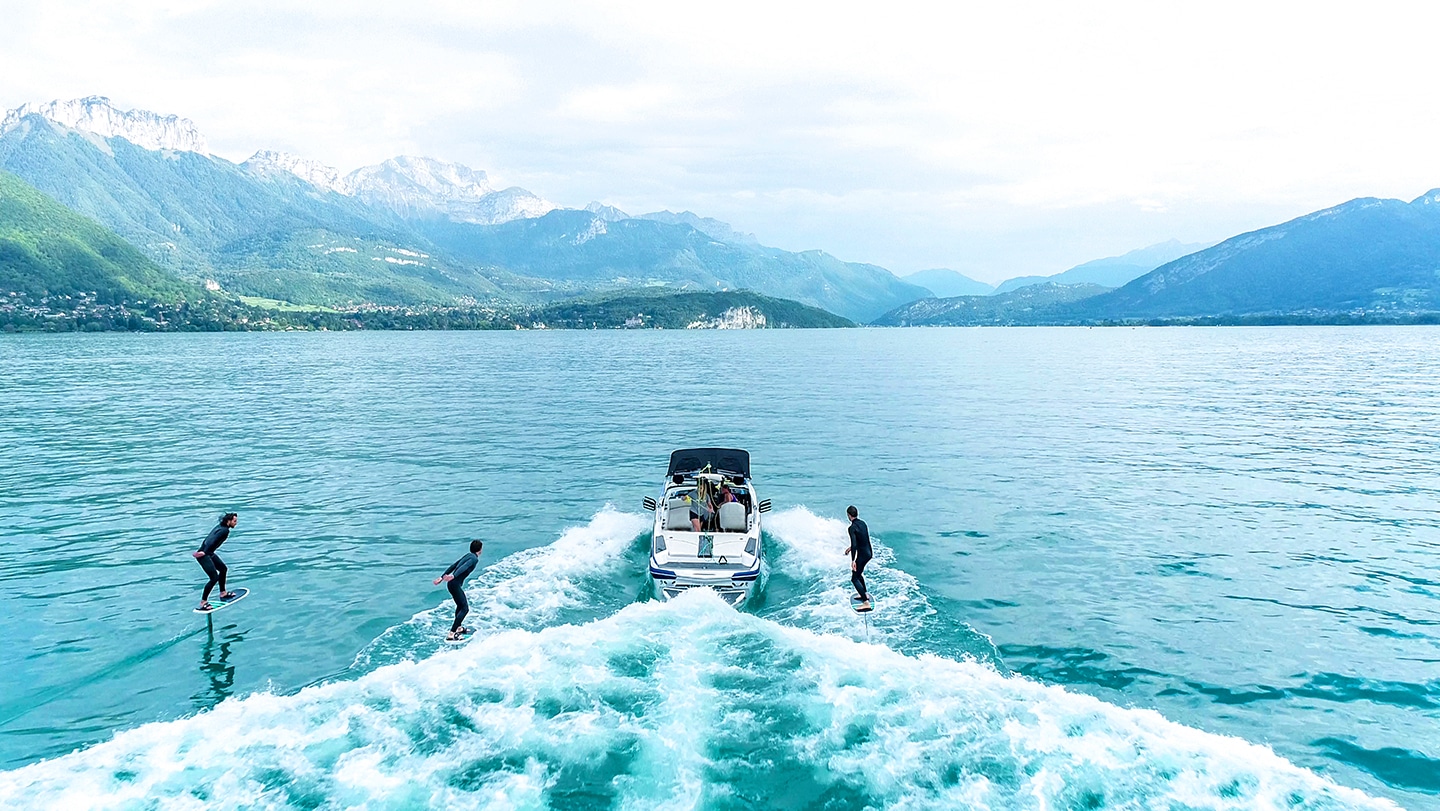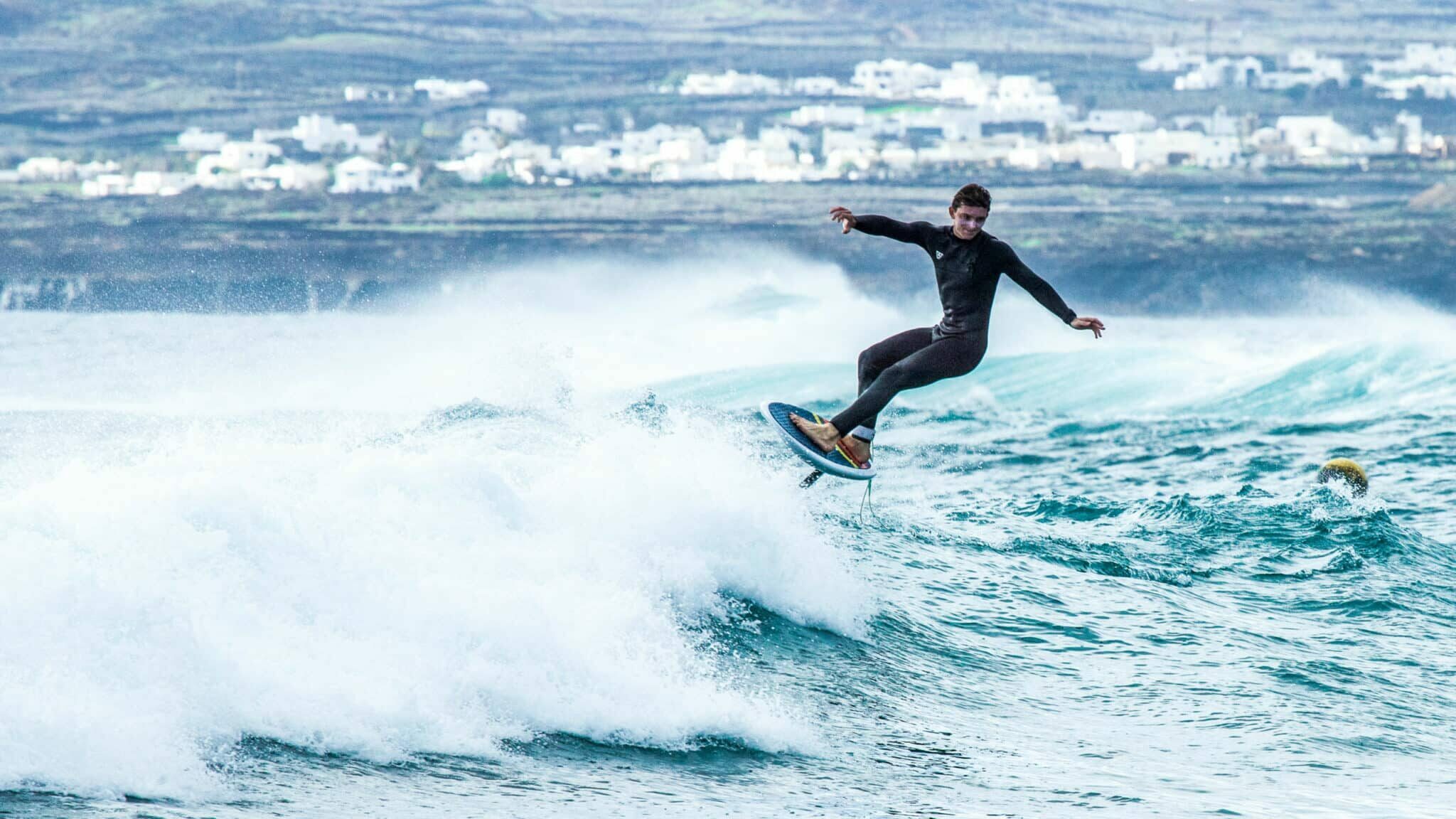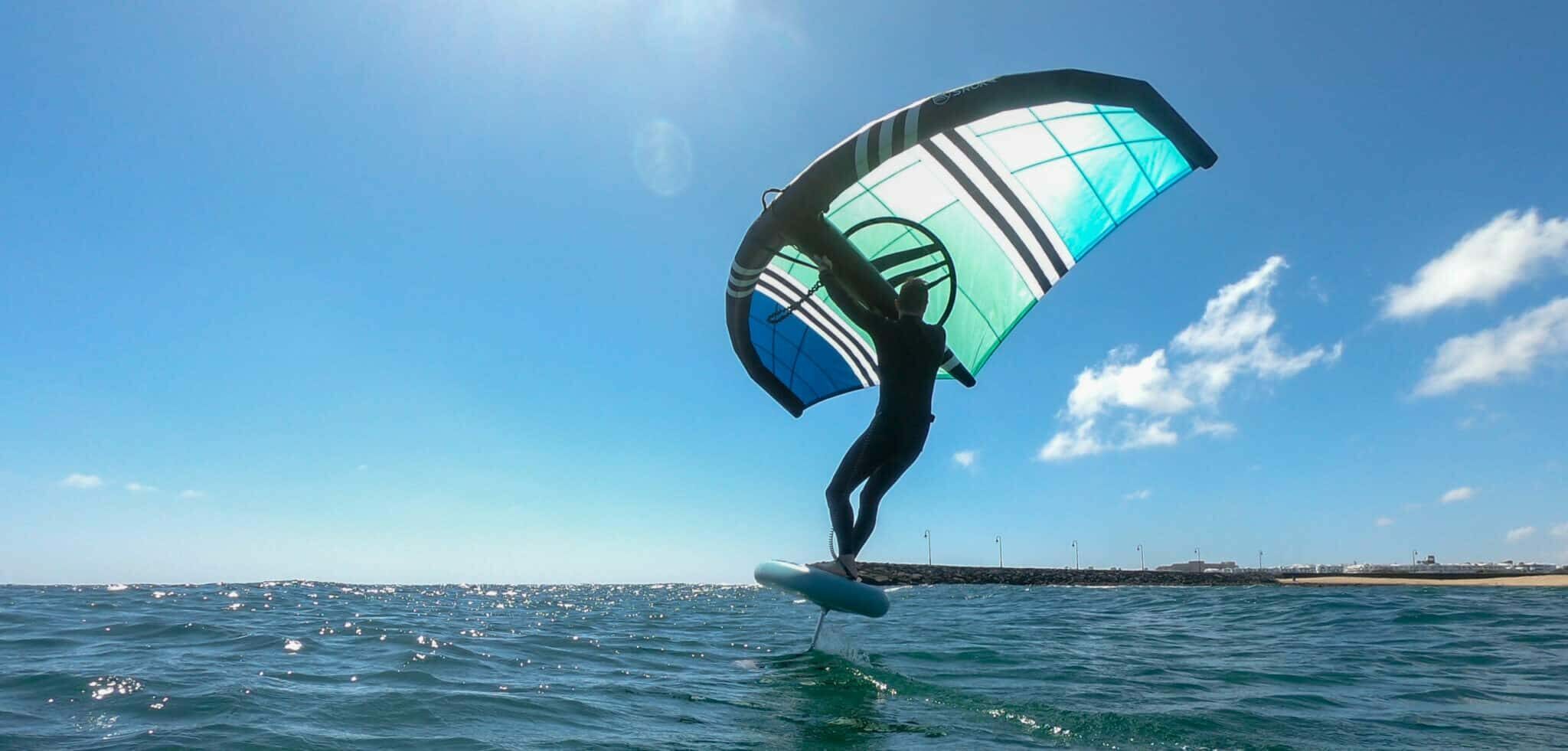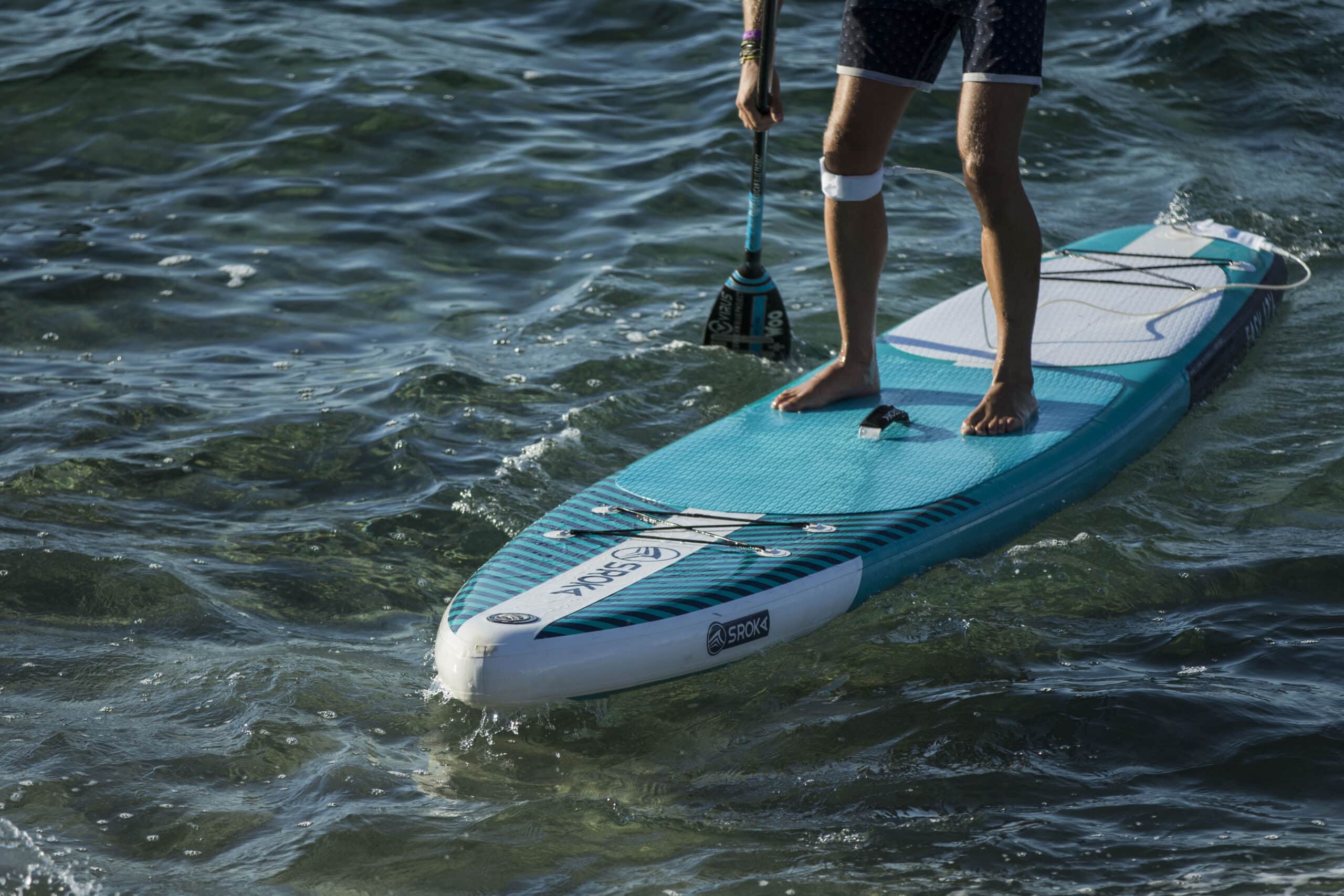
C’est en septembre 2021, que nous sommes allés tester de nouveaux produits pour le Wake Foil. Nous étions avec nos riders, Paul-Conrad Delaere et Gabriel Bachelet, tous deux accompagnés de Bruno SROKA. Ils ont enchaîné les vagues sous l’objectif de Jean-Marc Favre. Jean-Marc Favre est le photographe qui a suivi Bruno tout au long des 20 dernières années. Notamment lors de son projet d’aventures : la traversée du Cap Horn en Kite. Il faut dire que le lac d’Annecy offre un spectacle unique. Le soleil qui se lève derrière les montagnes offre un contraste de couleurs vibrantes. Il était donc inenvisageable pour nous de s’y trouver sans immortaliser nos sessions. Pour ces sessions nous avons embarqué sur le bateau d’Emmanuelle Dumolard, qui propose des cours de sports nautiques sur le lac d’Annecy.
Annecy est la destination automnale ou printanière idéale. Elle allie les plaisirs : ski le matin et wake foiling l’après-midi, avant de terminer la journée par un bon repas montagnard. Nous avons également pu tester la célèbre Waves Garden des Alpes suisses, Alaïa Bay. À seulement 1h30 d’Annecy c’est le premier bassin de surf d’Europe continentale. Un super spot qui permet de surfer un maximum de vagues juste aux pieds de magnifique montagnes.







